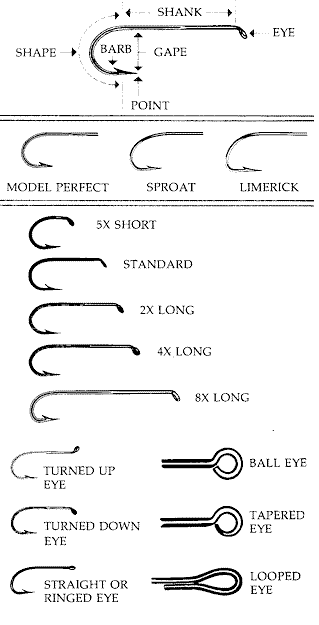The distance between point and shank and what determines the size of the hook. Hooks range in size from 19/0 down to 32.
The shank length can be longer or shorter than standard for a given hook size. It is a numerical designated by X long or X short
Wire Size: For flies that you want to float you can get hooks with lighter gauge wire designated by X fine.
For flies that you want to sink you have available heavier gauge wire designated by X strong.
Ball Eye: An eye in which the wire diameter is constant and forms a circle perpendicular to the plane of the hook itself. The ball eye may be closed or open. The closed kind is tempered and therefore stronger; the open eye is usually found on cheap hooks.
Tapered Eye: On a 'tapered' ring, the thickness of the wire is reduced. I t gradually tapers towards the end of the ring. This is done to reduce the weight of the hook and make it effective for dry-fly use.
Looped Eye: The wire in the eye of the hoop runs back along the shank toward the rear of the hook. The end of this wire is usually tapered, although it can also be made untapered. Looped-eye hooks are traditionally used in making salmon wet flies.
Turned Up Eye Used to maximize point clearance on small flies.
Turned Down Eye The most common style
Straight Eye Use to achieve special effects i.e. egg patterns and some streamers
